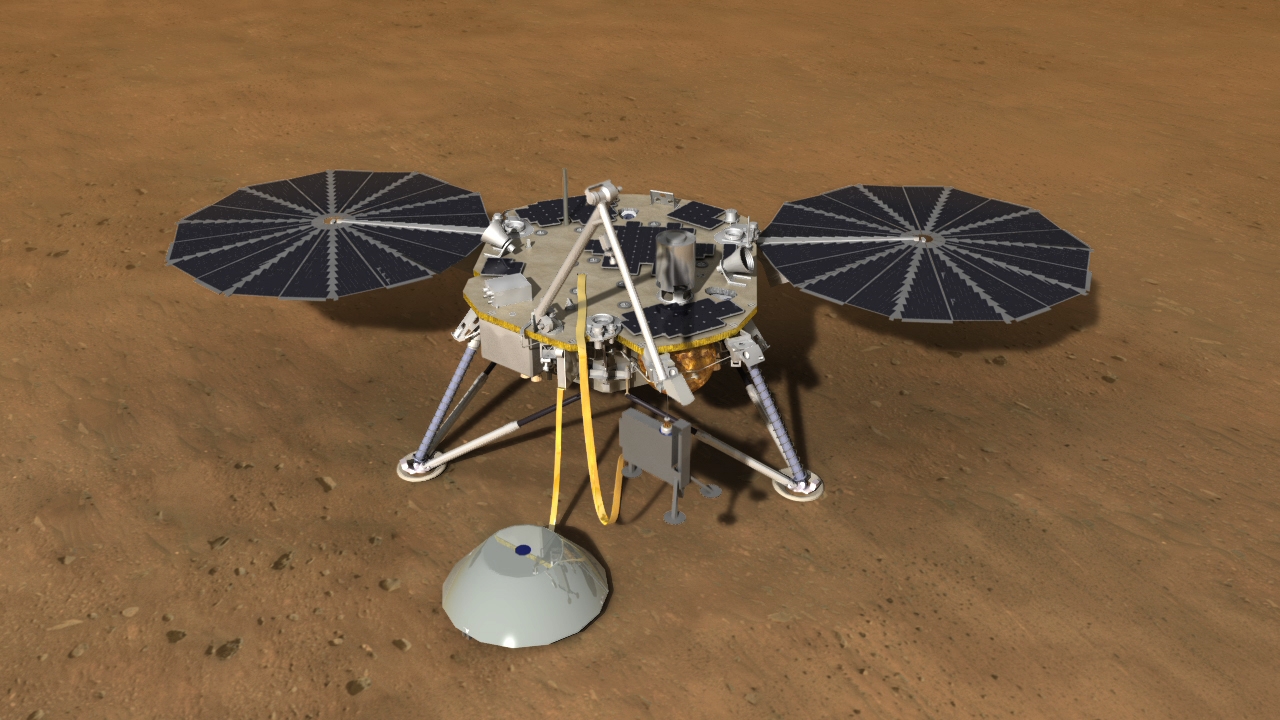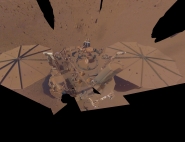Lander
The InSight mission is similar in design to the Mars lander that the Phoenix mission used successfully in 2007 to study ground ice near the north pole of Mars. The reuse of this technology, developed and built by Lockheed-Martin Space Systems in Denver, CO, will provide a low-risk path to Mars without the added cost of designing and testing a new system from scratch.

The InSight Lander will carry three instruments to the surface of Mars to take the first-ever in-depth look at the planet's "vital stats": its pulse, or internal activity, as measured by the SEIS instrument; its temperature as measured by the HP³ instrument; and its reflexes as measured by the RISE instrument. Together, the data will provide essential clues about the evolution of not just Mars, but also all the terrestrial planets.
- SEIS: To capture Mars' pulse, or its internal activity, InSight will carry a seismometer called SEIS to the surface of the Red Planet. SEIS will take precise measurements of quakes and other internal activity on Mars to better understand the planet's history and structure.
- HP³: To take Mars' temperature, a key indicator of planetary evolution, InSight will deploy a heat flow probe on the surface of Mars. The instrument, known as HP³, will hammer five meters into the Martian subsurface, deeper than all previous arms, scoops, drills and probes, to learn how much heat is coming from Mars' interior and reveal the planet's thermal history.
- RISE: To track Mars' reflexes, or the way it wobbles when it is pulled by the sun, an investigation called RISE will precisely measure the Doppler shift and ranging of radio communications sent between the InSight lander and Earth. By tracking wobble, scientists can determine the distribution of the Red Planet's internal structures and better understand how the planet is built.
- Cameras: Insight will incorporate a camera, similar to the "Navcam" engineering cameras onboard the Mars Exploration Rovers (MER), mounted on the arm of the lander that will serve to capture black and white images of the instruments on the lander's deck and a 3-D view of the ground where the seismometer and heat flow probe will be placed. It will then be used to help engineers and scientists guide the deployment of the instruments to the ground. With a 45-degree field of view, the camera will also provide a panoramic view of the terrain surrounding the landing site.
A second similar camera, with a wide-angle 120-degree field of view lens like the "Hazcam" cameras on MER, will be mounted under the edge of the lander's deck and will provide a complementary view of the instrument deployment area.
Animation of the proposed InSight Lander deploying its instruments - Credit: JPL/NASA

